
Henry Scott Tuke Painting Reproductions 2 of 4
1858-1929
British Newlyn School Painter
82 Tuke Paintings
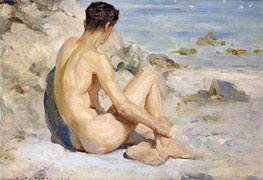
Boy on a Beach 1912
Oil Painting
$909
$909
Canvas Print
$61.75
$61.75
SKU: THS-12895
Henry Scott Tuke
Original Size: unknown
Private Collection
Henry Scott Tuke
Original Size: unknown
Private Collection
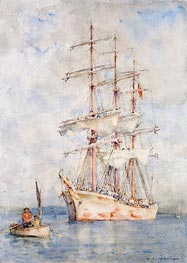
The White Ship 1915
Paper Art Print
$58.48
$58.48
SKU: THS-12896
Henry Scott Tuke
Original Size: 35.5 x 25.4 cm
Public Collection
Henry Scott Tuke
Original Size: 35.5 x 25.4 cm
Public Collection
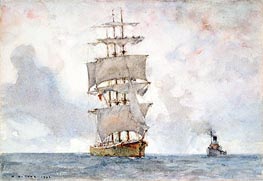
Barque and Tug 1922
Paper Art Print
$58.48
$58.48
SKU: THS-12897
Henry Scott Tuke
Original Size: 17.6 x 25.4 cm
Public Collection
Henry Scott Tuke
Original Size: 17.6 x 25.4 cm
Public Collection
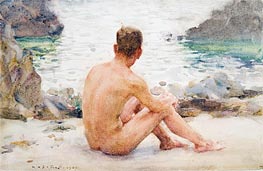
Charlie Seated on the Sand 1907
Paper Art Print
$58.48
$58.48
SKU: THS-12898
Henry Scott Tuke
Original Size: 14 x 21.5 cm
Public Collection
Henry Scott Tuke
Original Size: 14 x 21.5 cm
Public Collection
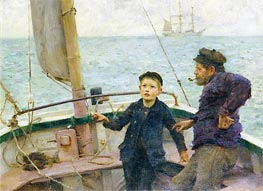
The Steering Lesson 1892
Oil Painting
$1144
$1144
Canvas Print
$61.75
$61.75
SKU: THS-12899
Henry Scott Tuke
Original Size: 45.2 x 59.2 cm
Private Collection
Henry Scott Tuke
Original Size: 45.2 x 59.2 cm
Private Collection
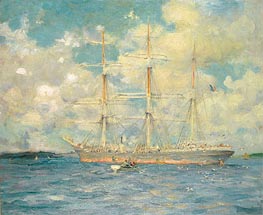
A French Barque in Falmouth Bay 1902
Oil Painting
$1058
$1058
Canvas Print
$76.57
$76.57
SKU: THS-12900
Henry Scott Tuke
Original Size: 50 x 60 cm
Falmouth Art Gallery, Cornwall, UK
Henry Scott Tuke
Original Size: 50 x 60 cm
Falmouth Art Gallery, Cornwall, UK
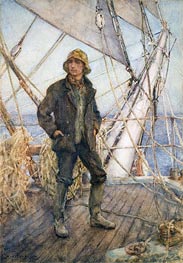
The Look-Out (The Lookout Man) 1908
Paper Art Print
$58.48
$58.48
SKU: THS-12901
Henry Scott Tuke
Original Size: 50.8 x 35.8 cm
Public Collection
Henry Scott Tuke
Original Size: 50.8 x 35.8 cm
Public Collection

T. E. Lawrence as a cadet at Newporth Beach, near ... 1906
Oil Painting
$1106
$1106
Canvas Print
$76.57
$76.57
SKU: THS-12902
Henry Scott Tuke
Original Size: unknown
Private Collection
Henry Scott Tuke
Original Size: unknown
Private Collection
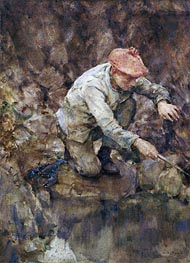
Netting Lobster n.d.
Paper Art Print
$58.48
$58.48
SKU: THS-12903
Henry Scott Tuke
Original Size: 38.1 x 27.9 cm
Private Collection
Henry Scott Tuke
Original Size: 38.1 x 27.9 cm
Private Collection

The Market, Belize, British Honduras 1924
Paper Art Print
$58.48
$58.48
SKU: THS-12904
Henry Scott Tuke
Original Size: 26 x 36.3 cm
Public Collection
Henry Scott Tuke
Original Size: 26 x 36.3 cm
Public Collection
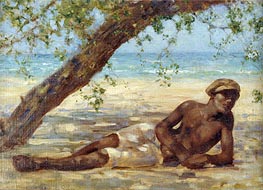
Samuel under a Tree, Jamaica n.d.
Oil Painting
$897
$897
Canvas Print
$61.75
$61.75
SKU: THS-12905
Henry Scott Tuke
Original Size: unknown
Private Collection
Henry Scott Tuke
Original Size: unknown
Private Collection
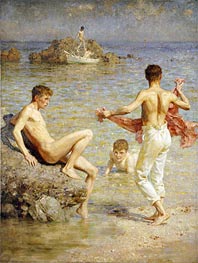
Gleaming Waters 1910
Oil Painting
$1365
$1365
Canvas Print
$70.28
$70.28
SKU: THS-12906
Henry Scott Tuke
Original Size: 197.6 x 148.6 cm
Private Collection
Henry Scott Tuke
Original Size: 197.6 x 148.6 cm
Private Collection

Noonday Heat 1908
Oil Painting
$1390
$1390
Canvas Print
$61.75
$61.75
SKU: THS-12907
Henry Scott Tuke
Original Size: 82 x 134 cm
Public Collection
Henry Scott Tuke
Original Size: 82 x 134 cm
Public Collection
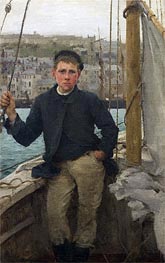
Our Jack 1886
Oil Painting
$1105
$1105
Canvas Print
$61.75
$61.75
SKU: THS-12908
Henry Scott Tuke
Original Size: 50.5 x 32 cm
Public Collection
Henry Scott Tuke
Original Size: 50.5 x 32 cm
Public Collection
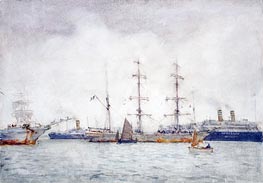
Ships in Harbour c.1919
Paper Art Print
$58.48
$58.48
SKU: THS-12909
Henry Scott Tuke
Original Size: 36 x 50 cm
Public Collection
Henry Scott Tuke
Original Size: 36 x 50 cm
Public Collection
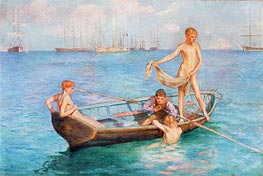
August Blue 1896
Paper Art Print
$58.48
$58.48
SKU: THS-12910
Henry Scott Tuke
Original Size: unknown
Private Collection
Henry Scott Tuke
Original Size: unknown
Private Collection
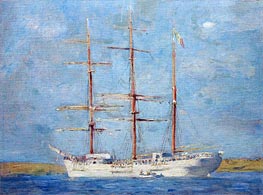
White Barque 1896
Oil Painting
$1010
$1010
Canvas Print
$61.75
$61.75
SKU: THS-12911
Henry Scott Tuke
Original Size: 36 x 48.6 cm
Public Collection
Henry Scott Tuke
Original Size: 36 x 48.6 cm
Public Collection

The Missionary Boat 1894
Oil Painting
$1161
$1161
Canvas Print
$61.75
$61.75
SKU: THS-12912
Henry Scott Tuke
Original Size: 56 x 92 cm
Public Collection
Henry Scott Tuke
Original Size: 56 x 92 cm
Public Collection
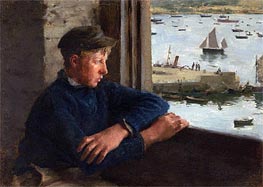
The Look Out 1886
Oil Painting
$888
$888
Canvas Print
$61.75
$61.75
SKU: THS-12913
Henry Scott Tuke
Original Size: 23.5 x 33 cm
Private Collection
Henry Scott Tuke
Original Size: 23.5 x 33 cm
Private Collection
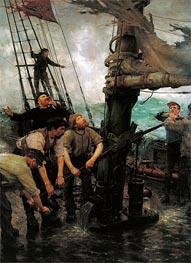
All Hands to the Pumps c.1888
Oil Painting
$1996
$1996
Canvas Print
$67.72
$67.72
SKU: THS-12914
Henry Scott Tuke
Original Size: 185.4 x 139.7 cm
Tate Gallery, London, UK
Henry Scott Tuke
Original Size: 185.4 x 139.7 cm
Tate Gallery, London, UK
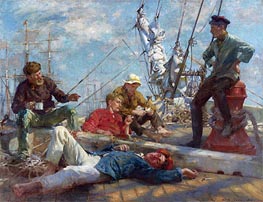
Sailor's Yarning, Midday Rest 1906
Oil Painting
$1560
$1560
Canvas Print
$71.80
$71.80
SKU: THS-12915
Henry Scott Tuke
Original Size: 103 x 134 cm
Private Collection
Henry Scott Tuke
Original Size: 103 x 134 cm
Private Collection
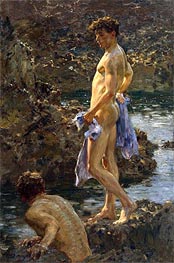
A Bathing Group 1914
Oil Painting
$1314
$1314
Canvas Print
$61.75
$61.75
SKU: THS-14132
Henry Scott Tuke
Original Size: 90.2 x 59.7 cm
Royal Academy of Arts, London, UK
Henry Scott Tuke
Original Size: 90.2 x 59.7 cm
Royal Academy of Arts, London, UK
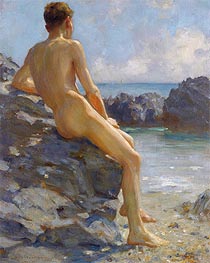
The Bather 1924
Oil Painting
$791
$791
Canvas Print
$61.75
$61.75
SKU: THS-14133
Henry Scott Tuke
Original Size: 39.4 x 31.8 cm
Private Collection
Henry Scott Tuke
Original Size: 39.4 x 31.8 cm
Private Collection
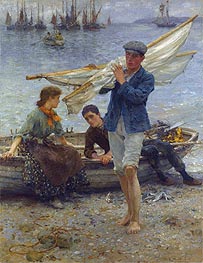
Return from Fishing 1907
Oil Painting
$1753
$1753
Canvas Print
$72.14
$72.14
SKU: THS-14134
Henry Scott Tuke
Original Size: 112 x 87.5 cm
Private Collection
Henry Scott Tuke
Original Size: 112 x 87.5 cm
Private Collection